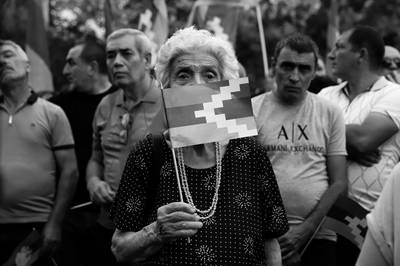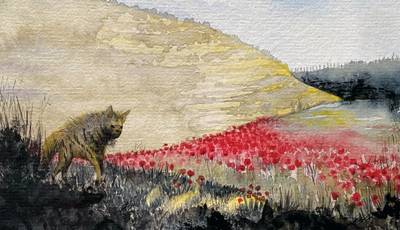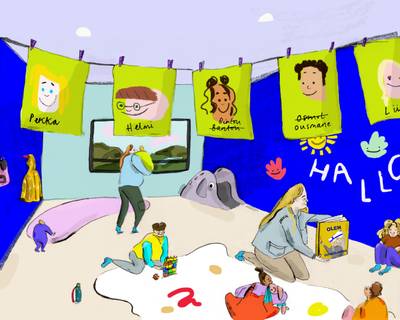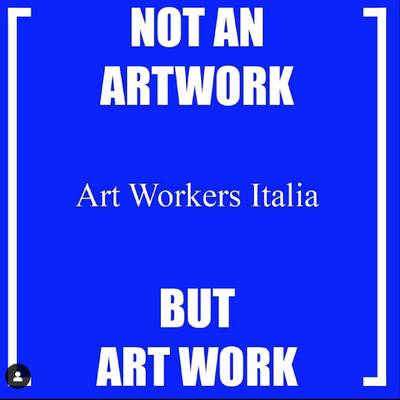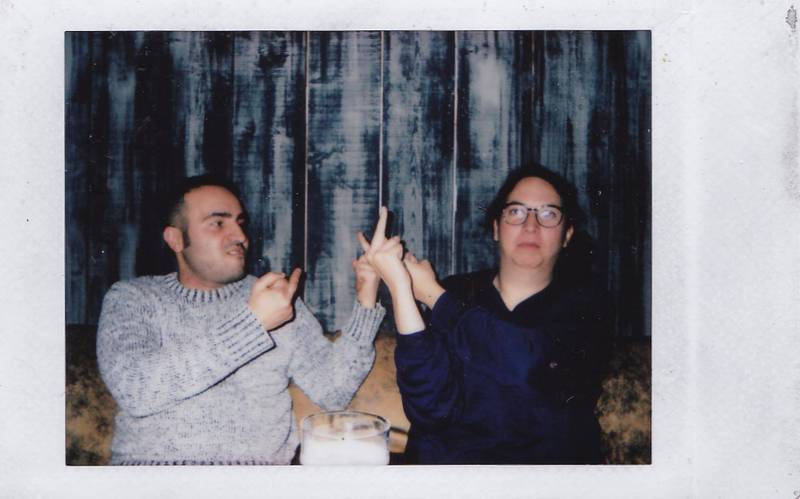

Photograph by Charlotte Glez
Andrea Coyotzi Borja (b. 1984. México) is an artist based in Helsinki. Her artistic practice focuses on the subject of the quotidian and its relationship to the artistic event. This developed to her current research on the infraordinary in her Doctoral studies at Aalto University. Her artwork has been exhibited in different countries such as México, United States, Italy, Hungary, Poland, Spain, Bulgaria, and Finland.
Farbod Fakharzadeh (b.1986) is an Iranian artist, curator and storyteller based in Helsinki, Finland. In 2018 he received a Master’s degree in Visual Culture, Curating and Contemporary Art from Aalto University. He is interested in using the magical, the comical and the absurd to create his version of social critique and he often works with history, archives and recycled material as tools for storytelling, re-imagining the possible and dreaming about parallel realities. He is also a co-founder of Taidekirppis, an archive project (currently on hold) in Helsinki.
I have known Farbod for… what, almost eight years now? We both arrived in Finland in the same month and the same year, not on the same day though. It was August of 2013 and we had both come, him from Iran, me from Mexico, to study at Aalto University in Pori. At that time, the Visual Culture programme from Aalto was located in Pori, which was, for both of us, our first approach to Finland.
Since Pori, Farbod and I have become close friends. We have studied together, we have lived together (along with another friend, Mario, both of them enriched and widened my experience of what it means to dwell - I lived in a tent in the living room for a year while living with them-a personal choice), we have worked together in the restaurant business (him as a chef, me as a dishwasher-best-job-ever), and exhibited together. We have laughed, cried, thought, discussed, fought, having done many of these things while drinking. One of our favourite things to do was go to a bar and talk about whatever thoughts I had, nonsense or not.
I remember that at that time, Farbod was going around in his head with the idea of archive. I didn’t feel close to the idea of an archive, but I did wonder why things (artworks in their materiality) cease to exist after being exhibited. What happens?
It was one of those times, at Bronco’s bar, that we were talking about what happens to artworks after an exhibition. This might have been fueled by the fact that we had just had an exhibition at Huuto Galleria, which was just over then. Farbod had stored some cinder blocks from his piece in my storage room. I had all my stuff back at my place, and, as usual, I felt empty after the opening of the exhibition. Anyways, we were there talking about the seemingly nothingness that happens to artworks after being exhibited, and I remember that at that time, Farbod was going around in his head with the idea of archive. I didn’t feel close to the idea of an archive, but I did wonder why things (artworks in their materiality) cease to exist after being exhibited. What happens?
And so the idea began, the idea of a place where artists could take their artworks that had been exhibited and were now being stored somewhere unseen, inactive. For years, I have heard tales of people being let go of materials once used for their exhibition due to a lack of space to store them. So there it was, an idea, the idea of a place, a common place, an archive of exhibited artworks where they could be on display for anyone to come and visit.
We had the idea, we made the application, we got the grant, and here I am now writing, trying to find the words to describe from there to now. From the idea, the “plan”, the expectation of the project, and the now in which we have decided to end the project because we don’t have funding anymore, we have no space, and, it would seem, we also don’t have a-something to keep us going, and, in consequence, to keep this going.
What happened? Well, to begin with, a global pandemic. 2020 was definitely not a good year to start a project with the idea of creating a space where people could visit and engage with the artworks. The idea also had the aim of not only storing but building an archive with which we could eventually create other collaborations. For example, a curator engaging with the archive and something coming from that, perhaps an exhibition, who knows. There were ideas that were near to impossible to develop in a year, especially a more slow-paced year in which engaging with people was not possible.
At this point (an end point?) Taidekirppis has twelve artists and more than twenty artworks (some artists provided more than one artwork). It took time to collect the pieces. The dynamic of how it worked was as follows:
Every month we would have an open call for artists to submit their work. This was not to determine whether or not an artwork would be accepted, but to determine how many artworks would be collected. There weren’t submissions every time we did the open call, but things take time, and as months passed, the space was changing. Artworks were turning the space into a place, and very seldom we had visitors.
Since we couldn’t do events—we actually didn’t have the opening of the space until the end of the 2020 year—we decided to activate the idea of the project digitally, which led us to develop “Live at Taidekirppis,” a series of online presentations by curators, artists, art workers, and art practitioners. The idea was that they would stream themselves presenting their practice for an hour. People were welcome to join the live stream, or they could (still can) watch the videos on our Youtube channel or via our webpage. Even though this could not make up for the idea that we had about this active space, I really like what came out of it. The visibility of ideas, thoughts, practices, and people, and, based on some comments received, people enjoyed both doing them and listening/viewing them, so I am glad they happened. A slice of hope of things happening within the confusion of the whole project. Within the confusion of living within a global pandemic.
Months kept passing by. We used all the budget we could for the alternate program of the live streams until the time for making an application came again. We worked on the application, adding new engagement opportunities, sharing what had happened thus far, and a new budget (which we later realized could have been lower), and we sent it not only to the grant body that supported us for the first year, but also to three other applications that could work for Taidekirppis. Months passed; open calls, collecting some work; we had the opening, which was great since people finally came and saw the space, and some things came from that (events and photoshoots in the space).
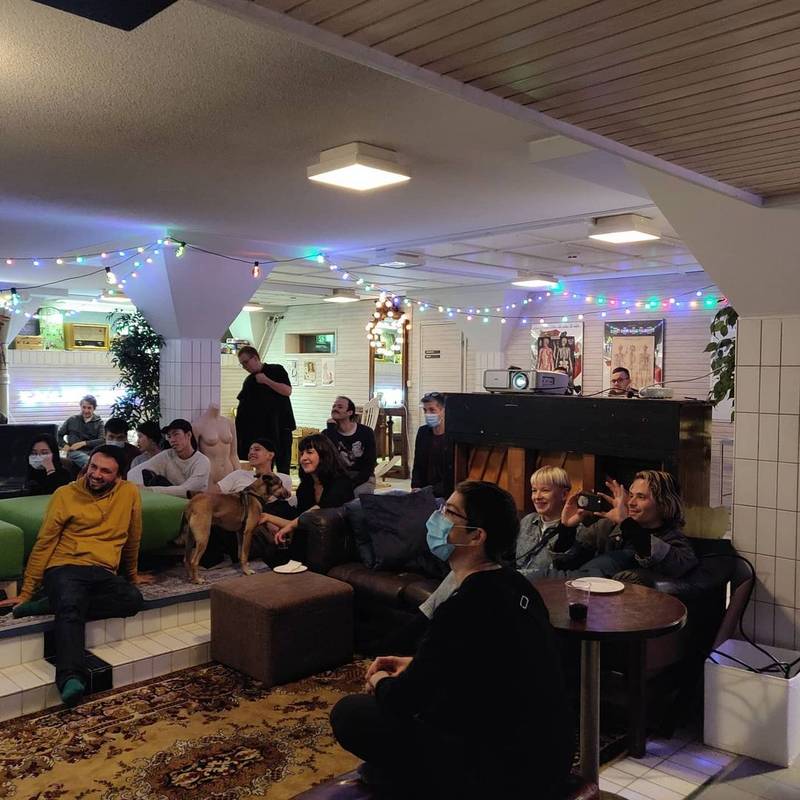

Transquips – a multicultural, multilingual comedy show, October 2020
Then came the end of 2020 and the beginning of 2021, the time to either be jolly or come to terms with negative results. The first rejection of our grant application came in December, but we knew that could happen. It wasn’t the one for renovation but another one and, although it would have been amazing, we weren’t as surprised as when the “We regret to inform you…” from the current grant body from where we had the grant for the first year came. Needless to say, we were surprised. To get nothing, we didn’t expect that. We knew our budget was maybe too high, but… nothing? OK… From then on, the mood went down. We had to clear out the space where we were, and the majority of the pieces were relocated to Farbod’s studio. Some other things to mine. Some to the trash. No more space. No more financial support.
As it happens when writing, many thoughts are written and rewritten. Drafts are left unfinished, and some thoughts might be left behind. Rescuing some of the thoughts expressed in some of the other drafts made in conversation with Farbod, I have gathered a couple below.
On the idea of having a product, of having a thing that is new and able to capitalize on that, my thoughts ran in the following direction:
I find that problematic, the never-ending and always regurgitating idea of new new new, more more more. It leaves no room for observation, for reflection, for learning. There is so much already, and don’t get me wrong, experimentation and exploration are important and exciting, but that’s not what I’m referring to here. It’s more the thought of “give me something new, impress me with the new 8th wonder”. I think there is so much discarded because they are not a “product”, something that can be capitalized. When I mention the word “strategies” I refer more to exploring other approaches, ways of doing and types of engagements.
And when it came to a question regarding the word “recognition,” the meaning that is welcome is that of encounter:
“Ideas are to be found in the same way that you find wild mushrooms in the forest” (…) “Instead of having them come to you clearly, they come to you as things hidden”1. ― John Cage
There is a moment between looking for something and finding it. When looking for something, it happens that one is already looking at the object before the eyes recognize it, but it’s there, taking shape in our consciousness, in our awareness. In that sense, Taidekirppis was looking for an encounter, an awareness of something that is already there, but we don’t spend enough time looking or thinking about it to let our consciousness sink in and tell us something. Whatever that might be.
“I wish it need not have happened in my time," said Frodo. “So do I,” said Gandalf, "and so do all who live to see such times. But that is not for them to decide. All we have to decide is what to do with the time that is given us.”― J.R.R. Tolkien, The Fellowship of the Ring.
I would have loved to experiment, write, think, and do things around the idea we had with Taidekirppis. There are a lot of personal feelings towards the whole project, not all positive feelings. But I am trying, in this text at least, to be kind to myself and to the project.
The idea is not necessarily over. We can still continue in other forms, and we might. With other approaches, we can still continue thinking, writing, and doing. This is just a walk through how the project began, what our intentions were, and where we are now. It doesn’t mean we will stay here, though.
Andrea Coyotzi Borja, Helsinki, 2021.
A certain type of possibility draws me towards thinking about contemporary art as a subject. The essence of the contemporary may be tracked by finding bridges and bringing together the past, present, and future. The point that creates the fascination in me towards the subject is this same sense of what I would refer to as all-timeliness. A dreamlike state of not being confined to a specific time but instead trying to analyze or articulate a given situation by connecting the dots in an archive, by looking at the past, experiencing the present, and thinking about the future.
So what happens when an archive-based project ends prematurely? This is the question I’ve been avoiding. I often thought of it rather as a phenomenon that is always regenerating itself, a phenomenon in a constant process of becoming. But with the absence of available funding of any sort, the project came to its untimely end, at least in its current form. What remains, though, are my hopes for the future of the project and other projects like this, where we are facing rather uncharted territory, where our chances of defeat are much greater than those of success, however you may define that word.
The phone call:
“What my eyes beheld was simultaneous, but what I shall now write down will be successive, because language is successive” ― Borges, El Aleph2
Back in 2020, Taidekirppis seemed like the best surprise of my life. I had recently quit my job at a kitchen in order to pursue art full-time for a year. That’s all the time I had, or to be more exact, the amount of money I had. Maybe enough to survive a year. A combination of residence permit laws and financial difficulties meant that I never had a year like that since starting my MA studies in 2013. And there it came, out of nowhere. On a cold January morning, I got a call from Andrea. “Son of a b…, we got it”, she said. “We got the grant.” I just couldn’t believe it. I was ecstatic. We had gotten a one-year grant, 50%, but still. It just happened so unexpectedly and it gave me so much hope and joy. We could actually do this! We received the first part of the money in March, but we started work in January, as it usually goes when you’re working on grants. We found a space for the project, we signed the lease in March, and then it came. BOOM. A global pandemic hit us, and we were not ready for it at all.
The project we had planned for had a big focus on community-based work and physical presence in the space which was now suddenly impossible. As expected, this contributed to a very rocky start. It took us a long time to adjust to the new reality of a project designed for an old one, and doing so while also attempting to define the project as we went made things much more complicated.
At the end of the one-year 50% employment grant, which happened between March 2020 and February 2021, we had collaborated with, commissioned, and housed fewer artists than we imagined we would, and we had to replace parts of our programming with a substitute online initiative.
Through compiling a digital archive of exhibitions and a temporary physical collection of works by emerging artists based in Finland, Taidekirppis aimed to construct an alternative historical record that could serve as a tool for critical thinking and reflecting on the working conditions that shape our practices.
The archive:
“All moments, past, present and future, always have existed, always will exist.”3―Kurt Vonnegut, Slaughterhouse-Five
Taidekirppis was an artist-run space, an archive, and a temporary collection. A platform for re-thinking exhibition experiences and creating an archive of past exhibitions. Through compiling a digital archive of exhibitions and a temporary physical collection of works by emerging artists based in Finland, Taidekirppis aimed to construct an alternative historical record that could serve as a tool for critical thinking and reflecting on the working conditions that shape our practices. At the same time, Taidekirppis was home to artworks that had passed through the life cycle of being created and exhibited and now were without a place.
As an accumulation of historical records, archives tell us their own version of all that has been and bring about an endless multitude of possibilities for interpretation, one that lines up with the multitudinous parallelism of the forking paths that take place in our minds, much like parallel universes happening all at the same time in the theory of the multiverse4. This is an opportunity similar to a vacuum state inside a lab in which lies the possibility of thinking about what has been, what there is, and what can become.
If one considers artistic thought to be a continuous process of endless reinterpretation of memory and experience, one which is not entirely confined to the rules or value system of the world in which it comes to be, then it may have the potential to give legitimacy to certain actions or activities that could enable the creation of temporary spaces of thought, analyzing and reflection on the traits and directions of conceptual changes happening around us. But after any act of archiving, comes an unavoidable process of reinterpretation of gathered data or documentation. One that could be crucial to the destiny and the prominence of a body of knowledge for years to come.
That is what Taidekirppis was trying to initiate. Not only to work as a stopgap for our practical immediate problems and a duct tape, temporary solution to help our colleagues out with aspects of their work, which it was and did a good job of, but one that we were just getting started on. An archive that has space for actors not glorified by the main narrative of contemporary art in Finland.
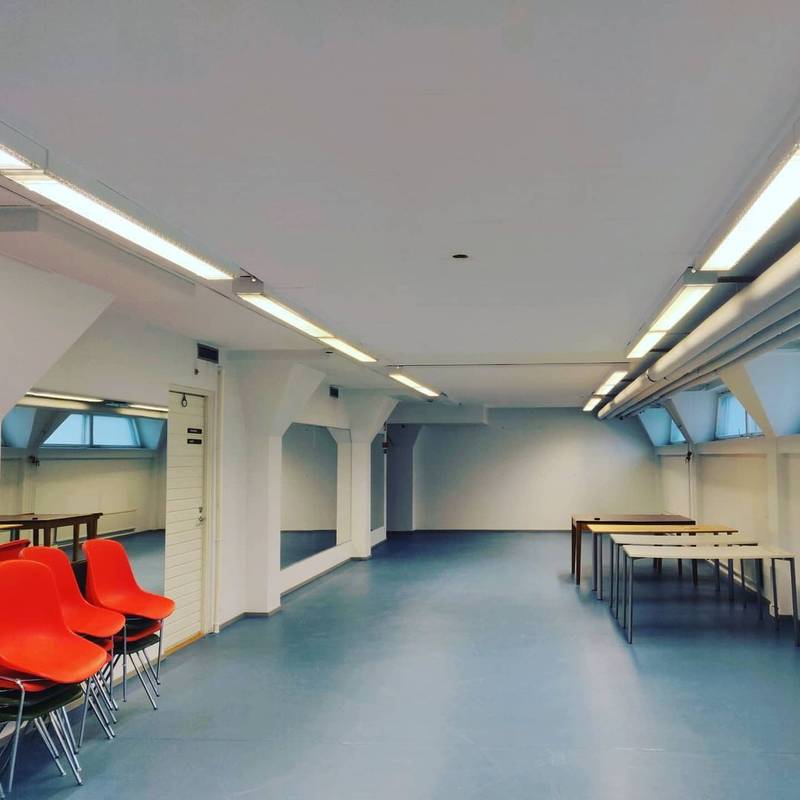

Taidekirppis space, March 2020
The cycle of affirmation, abandonment, despair and continuation:
“I’m quarter gone…I’m half gone…I’m three-quarters gone…I’m all gone!”—The Gingerbread Man5
As a coping mechanism, most of us have, to some extent, developed methods of dealing with rejections when it comes to grants. Yet it is hard for me to deny the feeling of affirmation that comes with receiving a grant, or lack thereof, when you are not awarded one. Those feelings remain, no matter how aware you are of the system’s flaws and decision-making processes.We all need to be seen and receive recognition, affirmation, and acceptance in order to have the energy to fight the daily battles that come with this career path. When you get rejection after rejection, despair and futility hit you, and you doubt every part of your career. Did we ask for too much money? Was our continuation plan too ambitious? Would they have given us a grant if we had done this or that? These are the thoughts and worries we went through when we started getting those rejections despite applying for funding with a new continuation plan from almost every funding body in Finland.
There’s always a pressure to create, to have a product. In the absence of which we need to offer documentation of an act or a thought process. There always seems to be a need for evidence, a trace, in order to be judged upon and to retain the image of an active state. And that active state or the illusion of it seems to be all we attempt to create and all that gets rewarded. We don’t celebrate failure. It’s certainly not rewarded, but there is always an urge to succeed, or at least to produce an image of success, of keeping your promise, of delivering. But how would you have the courage to break new ground if you’re required to succeed?
Looking back at the case of Taidekirppis after a year and seeing the struggles of other art-based initiatives around me that are breaking new ground and doing vital work yet are facing a threat to their existence due to a lack of funding, makes me wonder about a way out.
I think the fact that we weren’t planning to produce something new at a time that is all about production and bold initiatives made the project less appealing to other funding bodies. What surprised me though, was the distance we experienced after the grant period. You receive a grant, your face is on the funders’ website, you get the money, and that’s basically it. Don’t get me wrong. That’s great, but maybe not enough. There is no further support in the realization of the project and no system in place to help the grantees get a grasp of the steps it takes to build a new art-based platform in Finland, and if, somewhere in the beginning, a global pandemic hits, you are still expected to somehow make it work. The fact that Taidekirppis did not receive a continuation grant baffles me and makes me question the point of funding an archive-based project for only a year. It seems like some people read our proposal the first time and liked it and decided to fund it, and the next year, this simply didn’t happen for us, which makes sense in the abundance of great ideas seeking funding and if projects are not seen in a historical manner. The distance between being a featured funded project on the funder’s website and not receiving a continuation grant is very short. And that’s part of the reality for people in our situation. One year is too short to see a project through when its scope is to create an archive of exhibitions, but that could be said about many other community-based initiatives that exist around us.
Looking back at the case of Taidekirppis after a year and seeing the struggles of other art-based initiatives around me that are breaking new ground and doing vital work yet are facing a threat to their existence due to a lack of funding, makes me wonder about a way out. The truth is, most of these brilliant initiatives are/were supported mainly by private or semi-private foundations. Best case scenario, this means they receive funding for 2-4 years max before being dropped and expected to be economically sustainable. Other than the role of the government, which could be discussed lengthily and could be very important, my question is: in a highly privatized capitalist economy where the major funding bodies can continue to exist solely because of their business ventures and market investments that support them, how can it be expected from an art initiative that does not have access to that kind of capital nor is based on a massive production and market chain to be economically sustainable in a few years, if ever? Would these foundations be able to sustain themselves and pay for their staff’s salaries without the help of the business ventures that they’re built on?
If the answer is yes, please help us by sharing your knowledge with us. And if the answer is no, how is it expected of artworkers without access to employment security and no business background to be able to sustain their organizations and initiatives once their grant runs out? Could funding bodies come together to create the possibility of dialogue, the sharing of experiences, and the development of a body of knowledge and toolsets around the topic of post-funding survival and economic sustainability for the initiatives they fund? Or at least create a space for questioning and analysing these futures? I’m not saying all of this to undermine the support and possibilities that these grants provide for people like me and the temporary relief that comes with it. The fact that these initiatives can exist in Finland, even for a short time, is great. What I’m trying to say is, there is definitely room for improvement, that this is something worth putting resources into.
Farbod Fakharzadeh, Helsinki, 2021.
